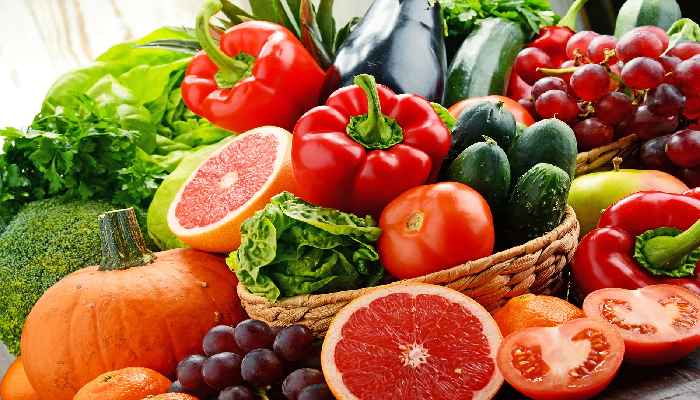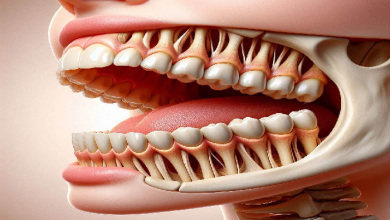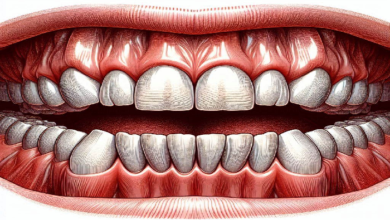50 Soft Foods To Eat After Tooth Extraction

50 Soft Foods To Eat After Tooth Extraction Extracting teeth requires more than just awareness it requires a thoughtful and rational way of eating. The delicate healing process then requires a change in food choices in order to direct the energy that might interfere.
To guide you through this very special month, we have carefully selected a selection of 50 simple dishes—a gastronomic compass for rapid recovery.
Each item on this list is not just a recommendation but takes into account the composition and nutritional value of the food. From comforting classics to innovative options, we offer a variety of soft foods that add comfort and luxury to the oral healing environment.
Whether you’re in the early days of recovery or slowly getting back into shape, this combination will help you create a healthy, comfortable meal after tooth extraction.
Dos and don’ts after tooth extraction:
Do
- Follow the post-operative instructions: Follow your dentist’s or oral surgeon’s instructions carefully.
- Rest and relax. Give your body plenty of time to recover by resting and avoiding strenuous activities.
- Using ice packs: Apply an ice pack to the affected area to reduce swelling and discomfort.
- Take care of your oral hygiene: brush your teeth gently but avoid the extraction area. Follow the directions with salt water as recommended.
- Choose soft foods: choose soft foods to avoid irritation or digestive problems.
- Clean: Drink plenty of water, but don’t use straws to cause problems.
- Take medications and supplements. If your dentist prescribes medications, take them as directed to reduce pain and prevent infections.
- Elevate your head. When sleeping, support it with pillows to prevent swelling.
- Avoid smoking. Avoid smoking, as this can interfere with treatment and cause problems.
- Schedule follow-up appointments: All scheduled follow-up appointments should be scheduled with your dentist to monitor the progress of your treatment.
Don’t
- Do not touch the extraction site. Avoid touching, rubbing, or rubbing with your mouth, fingers, or objects.
- Don’t rub hard. Rub gently, but not too hard, as this may damage blood vessels important for healing.
- No strenuous activity: Avoid strenuous exercise or weight training to increase blood flow and stimulate the brain.
- Avoid hard or tough foods: Avoid spicy, hard, or sticky foods that can irritate the extraction site.
- Avoid hot foods and drinks. Avoid hot foods and drinks to reduce vomiting and discomfort.
- Stop using weed: Smoking weed can cause dizziness and blood clots and interfere with healing.
- Avoid smoking or smoking cigarettes. Smoking delays healing and increases the risk of infection. All smoking products should be avoided during recovery.
- Avoid drinking alcohol. Alcohol consumption should be minimized due to the possibility of side effects and drug interactions.
- Avoid Aspirin: Unless prescribed by your dentist or doctor, aspirin should be avoided because it can increase blood pressure.
- Don’t miss follow-up appointments. Be sure to attend all follow-up appointments to monitor your progress and discuss any concerns as soon as possible.
Here are 50 Soft Foods To Eat After Tooth Extraction:
- Mashed potatoes
- Applesauce
- Yogurt
- Cottage cheese
- Smoothies
- Pudding
- Oatmeal
- Scrambled eggs
- Cream of wheat
- Fruit puree
- Jell-O
- Blended soups
- Hummus
- Avocado
- Nut butter (smooth)
- Soft cheeses
- Rice pudding
- Quinoa (well-cooked)
- Soft-cooked vegetables (e.g., carrots, squash)
- Chia pudding
- Porridge
- Pureed beans
- Custard
- Ice cream
- Gelato
- Sorbet
- Poached eggs
- Silken tofu
- Macaroni and cheese
- Mashed sweet potatoes
- Gravy
- Applesauce
- Bananas
- Canned fruit (in juice)
- Smoothie bowls
- Mashed cauliflower
- Fruit sorbet
- Blended fruit and yogurt popsicles
- Tapioca pudding
- Soft-cooked lentils
- Egg salad
- Crab or shrimp bisque
- Risotto
- Soft bread soaked in soup or milk
- Mashed pumpkin
- Pureed spinach
- Soft-cooked pasta
- Steamed fish
- Creamy polenta
- Milkshakes
Tips for Preparing and Serving Soft Foods
Cooking techniques to achieve the desired soft consistency:
- Blend and puree: Use a blender or food processor to create the perfect consistency for soups, sauces, and fruits.
- Steam: Choose steam to soften vegetables, making them easier to chew and digest.
- Boil: cereals, pasta, and vegetables are soft and easily cut with a fork.
- Puree: To soften vegetables, potatoes, or other vegetables by finely chopping them.
- Slow cooker: slow cooker for tenderizing meat and creating tender, flavorful dishes.
- Braise: Slowly cook the meat in water to tenderize it and retain moisture.
- Pressure Cooker: Use a pressure cooker to cook slowly and quickly.
- Cooking in broth: Cook food in broth to improve flavor and moisture.
- Soaking in milk or broth: Some recipes call for bread or cereal to be soaked in milk or broth to increase moisture and softness.
- Choose lean cuts: Choose lean cuts of meat so they don’t take too long to cook.
Portion control and food frequency:
- Small, Regular Meals: Choose small, regular meals so you can eat regularly without interfering with the healing process.
- Keep track of portion sizes: Keep track of portion sizes to avoid tension when hungry and discomfort.
- Nutrition: Aim for a nutritious diet consisting of a variety of foods from different food groups.
- Snacks: Prepare light, nutritious snacks to accompany main dishes.
- Hydration: Stay hydrated, but don’t overdo it during meals to avoid dilution of digestive enzymes.
Cleaning procedures to prevent infections during treatment:
- Clean Preparation: All utensils, cutting boards, and cooking surfaces should be thoroughly cleaned before preparing delicate foods.
- Hand hygiene: Wash your hands thoroughly before handling food to avoid contamination.
- How to Store: Refrigerate leftovers immediately to prevent bacterial growth and food safety.
- Anti-contamination: cutting boards and individual containers for handling raw and cooked foods.
- Properly Cooked Foods: Make sure all meats and poultry are properly cooked to kill any harmful bacteria.
- Check expiration dates: Check ingredients for freshness and throw away any expired or damaged items.
- Temperature Control: Keep hot and cold foods cool to prevent bacterial growth.
- Nutritious Choices: Encourage nutritious snacks to support healing and overall health.
- Ask about dietary restrictions: Consider any dietary restrictions or recommendations given by the health care provider overseeing the recovery process.
- Encourage good oral hygiene: Encourage good oral hygiene practices to prevent infections during oral treatment.
Conclusion
50 Soft Foods To Eat After Tooth Extraction If you have any questions or concerns regarding tooth extraction, please do not hesitate to contact Roots Dental. Go your nearest dental clinic to provide you with the advice and reassurance you need during this critical time
Related Post,



